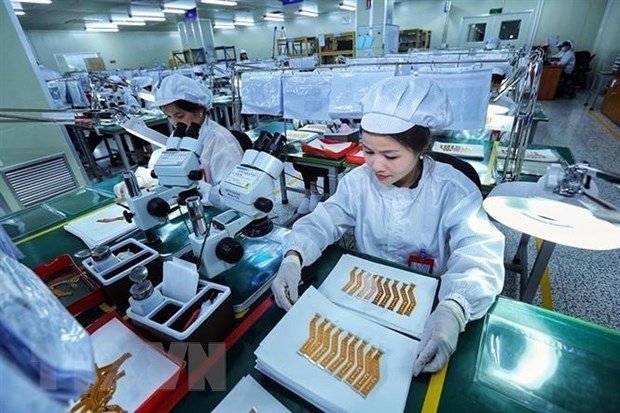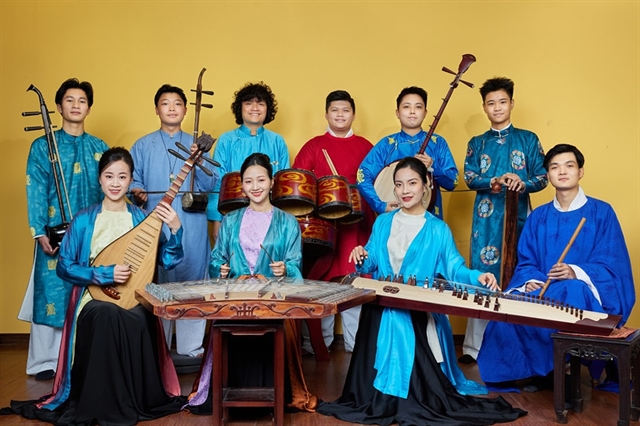 Life & Style
Life & Style

In 1969 President Hồ Chí Minh offered a French peace activist a woolen kepi hat on a cold evening. The gesture has become part of the lore surrounding the late leader.
 |
| First unveiling: Visitors at the exhibition of President Hồ’s souvenirs.— VNS Photo Đoàn Tùng |
HÀ NỘI — In 1969 President Hồ Chí Minh offered a French peace activist a woolen kepi hat on a cold evening. The gesture has become part of the lore surrounding the late leader.
In January 1969, as a member of the National Peace Movement in France, Pierre Biquard visited Việt Nam to support the country in its war with the US, along with others in the movement. President Hồ Chí Minh received the delegation at the Presidential Palace in Hà Nội. When bidding them goodbye, the president noticed Biquard was not wearing a hat, despite the cold weather. The leader offered him a woollen kepi hat. This gesture touched Biquard—a physics professor and an ardent peace activist - who often recalled this moment with his family members.
After his death, his family held onto the hat and offered it to the Hồ Chí Minh Museum in March last year through the Vietnamese Embassy in France.
This woolen kepi hat is on display at the Hồ Chí Minh Museum in a new exhibition along with 78 other objects that President Hồ Chí Minh offered or received from international friends and Vietnamese people.
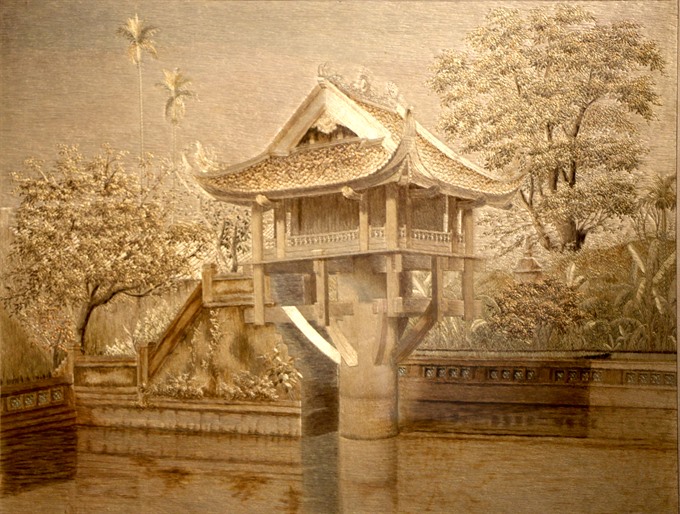 |
| International solidarity: An embroidered painting of the One-Pillar Pagoda that President Hồ Chí Minh offered to the British lawyer Loseby in 1960.— VNS Photo Đoàn Tùng |
Many touching stories are told alongside the souvenirs being presented to the public for the first time.
The exhibition was organised to celebrate the 127th birthday anniversary of President Hồ Chí Minh (May 19 1890). Seventy-nine objects were chosen for display, corresponding to the 79 years that the President lived.
“With the exhibition, we hope that the public can better understand the sincere sentiments, the respect and admiration of the Vietnamese people inside and outside the country and international friends towards President Hồ Chí Minh,” said Vũ Mạnh Hà, director of the Hồ Chí Minh Museum.
“The objects tell stories about the difficult life of Vietnamese people during wartime. Despite his very busy schedule, President Hồ Chí Minh still cared about the inhabitants and soldiers through the gifts he sent to people who achieved outstanding results in the battles, work and studies,” he added.
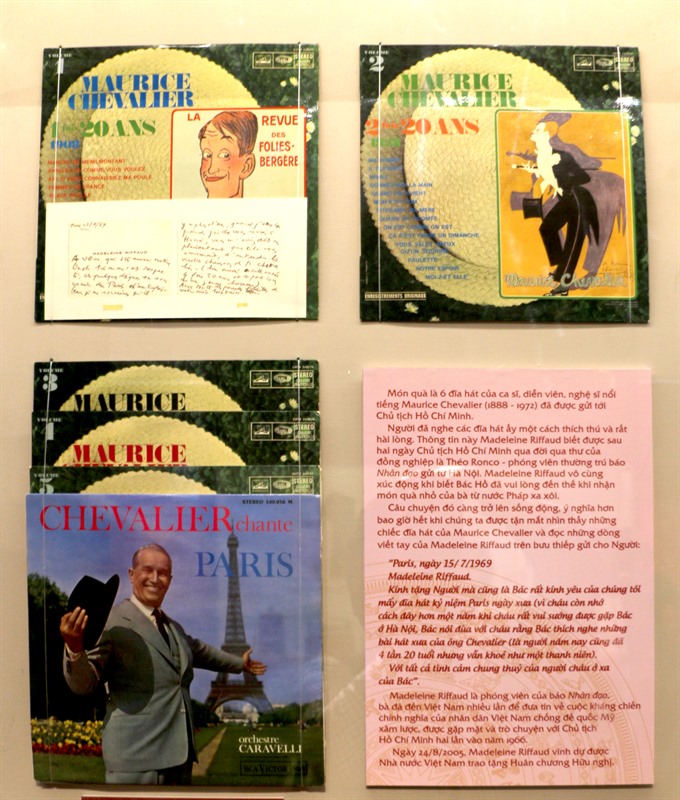 |
| Foreign admiration: Music CDs of singer Maurice Chevalier that French war journalist Madeleine Riffaud offered to the President in 1969, accompanied by a hand-written postcard.— VNS Photo Đoàn Tùng |
The exhibition is divided into three parts:
The first reflects the respect and love of the Vietnamese people toward the beloved President who spent his life fighting for the independence and freedom of the Vietnamese nation. It includes 27 objects offered to the President by Việtnamese organisations and individuals.
They include a radio that a group of Vietnamese living in Thailand offered him in 1960 when they came back to Việt Nam and were received by the President at Hải Phòng port. He used this radio until his death.
The public can also see a hand-knit sweater that Dương Thùy Liên, wife of the President’s doctor Lê Văn Chánh made and gave to the President after his visit to the Việt Bắc war zone.
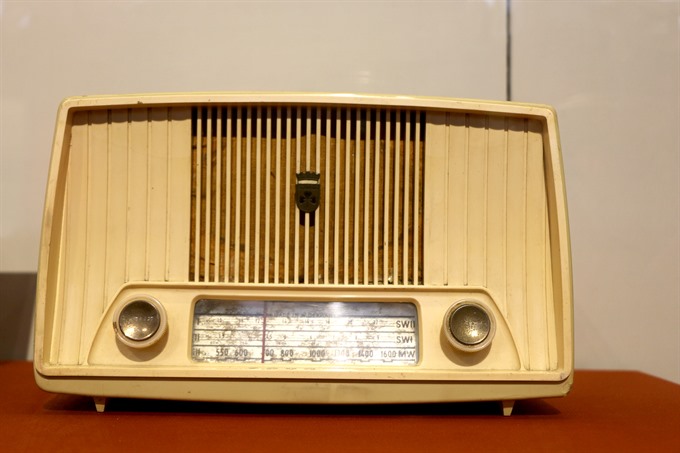 |
| Until his death: A radio given by a group of Vietnamese overseas living in Thailand President Hồ Chí Minh in 1960 when they came back to Việt Nam and were received by the President at Hải Phòng port. —VNS Photo Đoàn Tùng |
The second part includes 28 objects offered to the President by international friends to show their respect and admiration, proving the solidarity of other countries with the Vietnamese people. He visited 56 countries and did various jobs to earn his living while doing political activities.
The public can see the miniatures of Wayang Kulit puppets offered by Indonesian inhabitants, and a collection of music CDs of singer Maurice Chevalier brought by French war journalist Madeleine Riffaud, accompanied by a hand-written postcard in 1969.
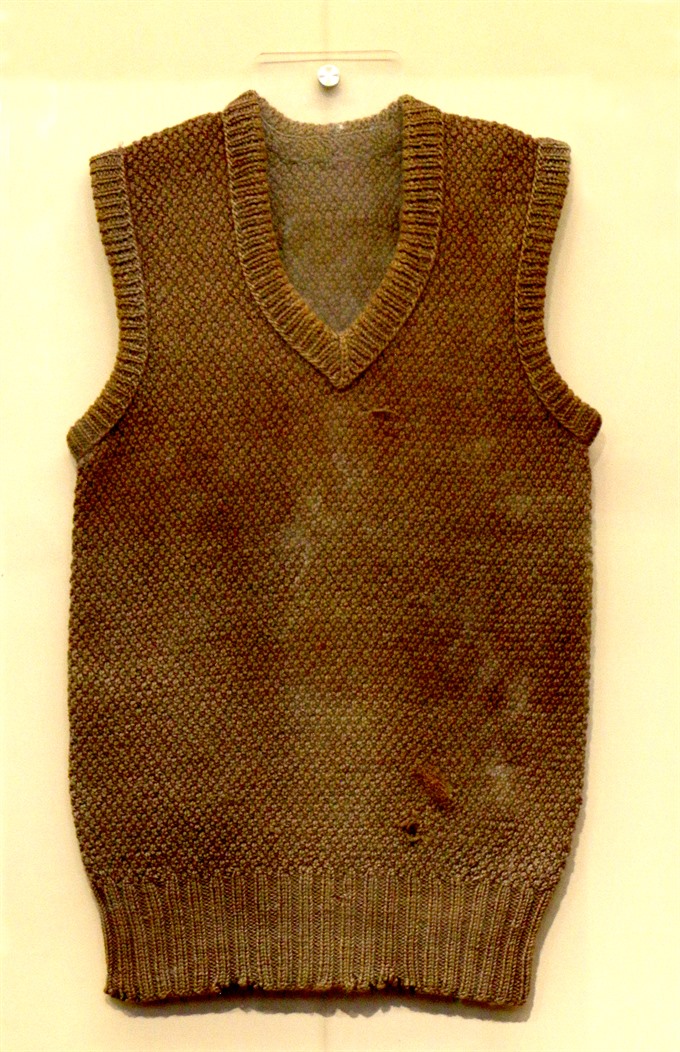 |
| Admiration: The hand-knitted sweater that Dương Thùy Liên, wife of doctor Lê Văn Chánh offered to the President after his visit to the Việt Bắc war zone.— VNS Photo Đoàn Tùng |
The third part includes 24 objects that President Hồ Chí Minh offered to Vietnamese organisations and individuals and international friends. Those objects were preserved for many years in the homes of those owners and were later donated to the HCM Museum by the owners or the members of their families.
They include an embroidered painting of the One-Pillar Pagoda that he offered to the British lawyer Frances Henry Loseby in 1960, and a sweater that he offered to artist Linh Nhâm in 1967 .
The exhibition runs until early July at the museum located at 19 lane 158/193 in Ngọc Hà Street in Hà Nội. — VNS




